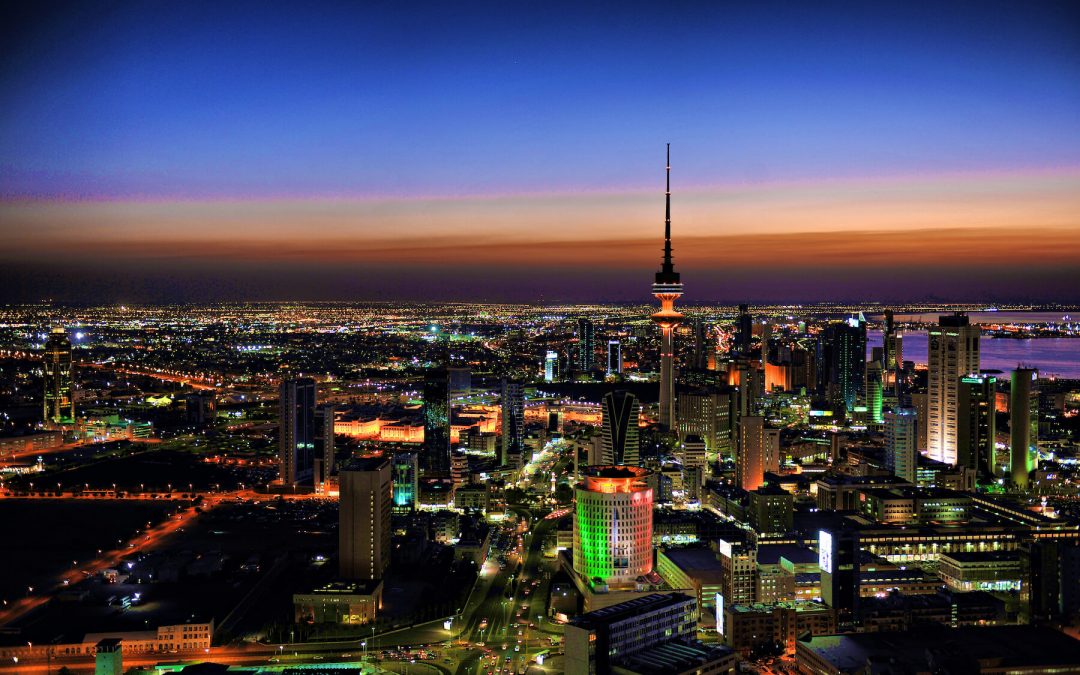Welcome to Min-On’s Music Journey! Today, the Min-On Concert Association and the Embassy of the State of Kuwait in Japan welcome you to Kuwait, located in the north-west of the Arabian Gulf.
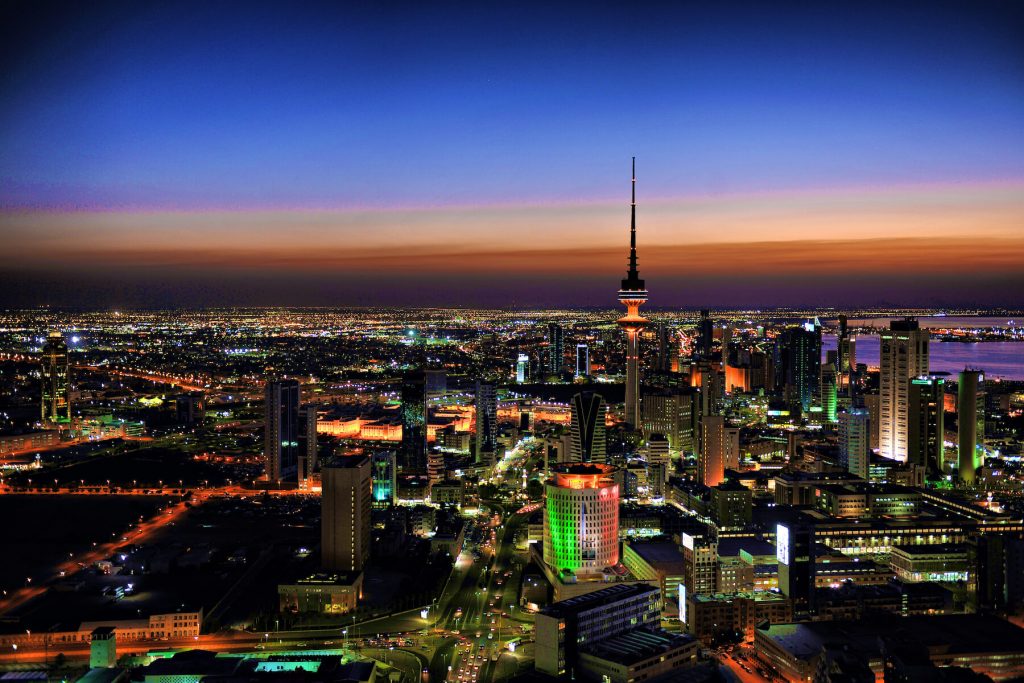
| Travel guide:
・Walk along Kuwait’s beautiful island beaches |
Kuwait means “small castle” in Arabic. The country has a land area of about 18,000 square kilometers, making it slightly smaller than the island of Shikoku in Japan, yet it boasts the seventh-largest oil reserves in the world.
The majority of the country is a largely flat, desert region, but at the same time, Kuwait has a deep connection to the sea. This is because it also includes Bubiyan Island and eight other coastal islands, where visitors can enjoy gorgeous coastal views.
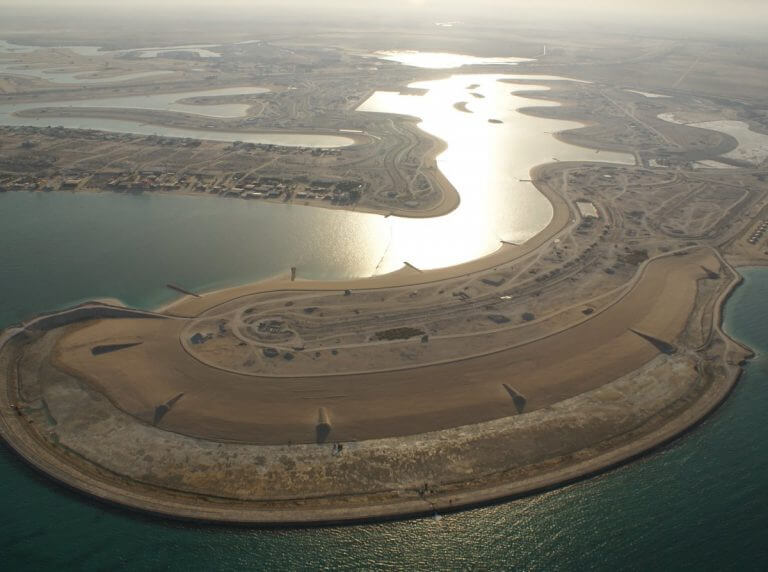
Bubiyan Island
Music Journey Editorial Team’s Choice Artist: Fatima Al Qadiri
To start off our journey, we would like to feature a song from Fatima Al Qadiri, a musician raised in Kuwait. Her outstanding artistry and creativity has led her to many artistic pursuits throughout the world, such as directing the soundtrack of the film Atlantics, which won the 2019 Cannes Film Festival.
Please enjoy listening to her song, “Souleiman’s Theme” and enjoy the beautiful, fantastical world it creates through sound.
Modern capital Kuwait City, filled with sophisticated buildings
The capital of Kuwait City lies on the Arabian Gulf Coast and serves as the economic and political center of the country. It also features traditional architectural buildings standing alongside urban skyscrapers. With its many history museums, art museums and theaters, Kuwait City is a hub of Kuwaiti culture.
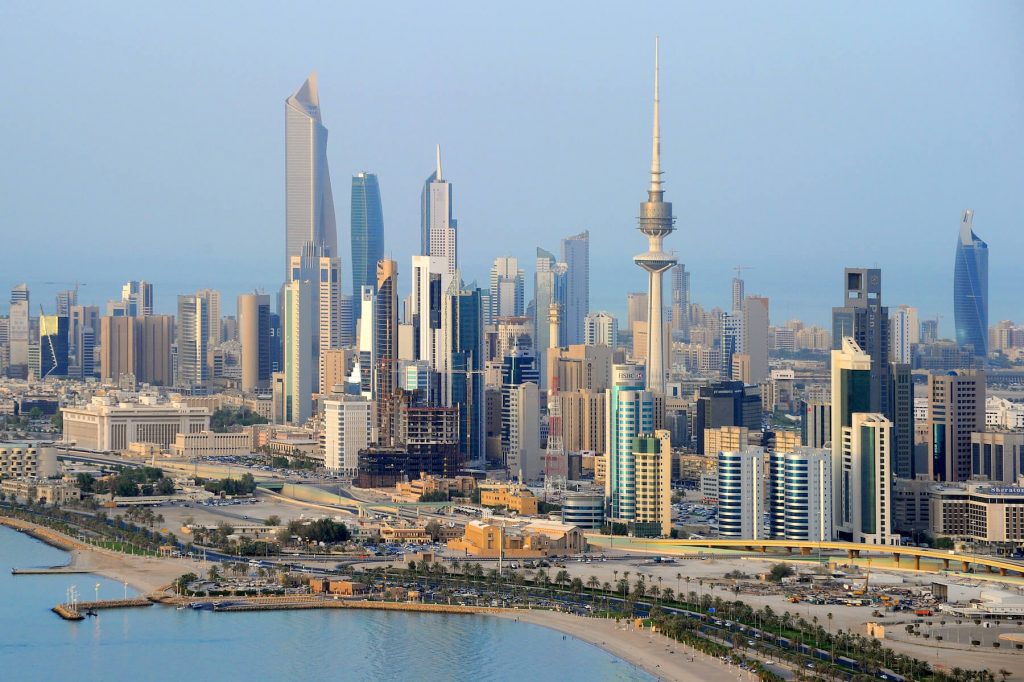
The Sheikh Jaber Al-Ahmad Cultural Centre plays an especially important role. The center is located in an expansive public park and includes four buildings: a performing arts theater, a musical theater, a conference center and a library. This location is a wonderful platform for education and cultural exchange.
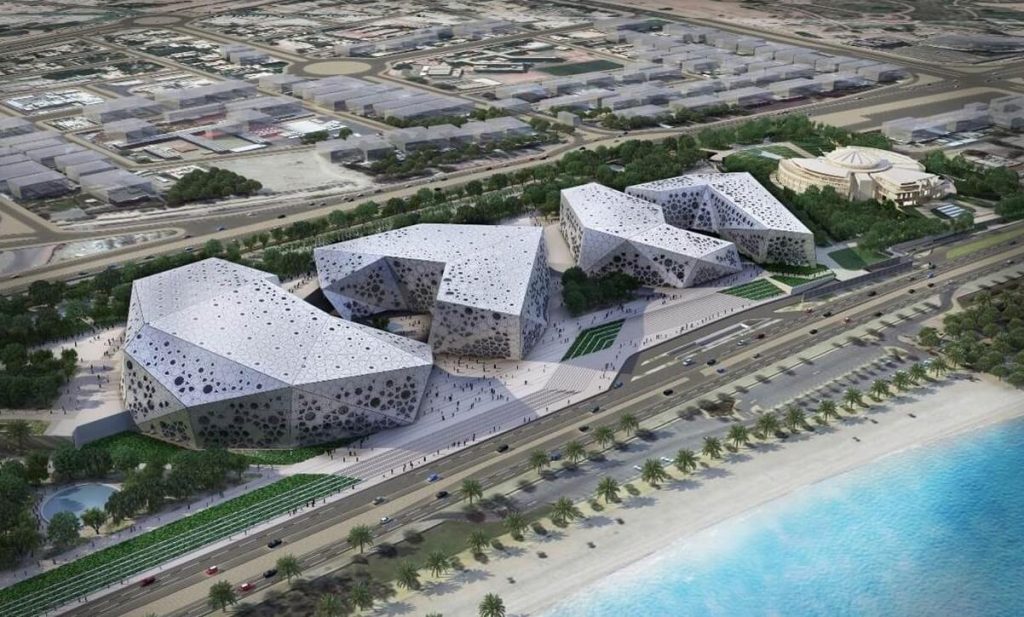
Other popular highlights for visitors include guided tours of the Grand Mosque, the largest mosque in the country, and the panoramic view of the Arabian Gulf from atop the Kuwait Towers.
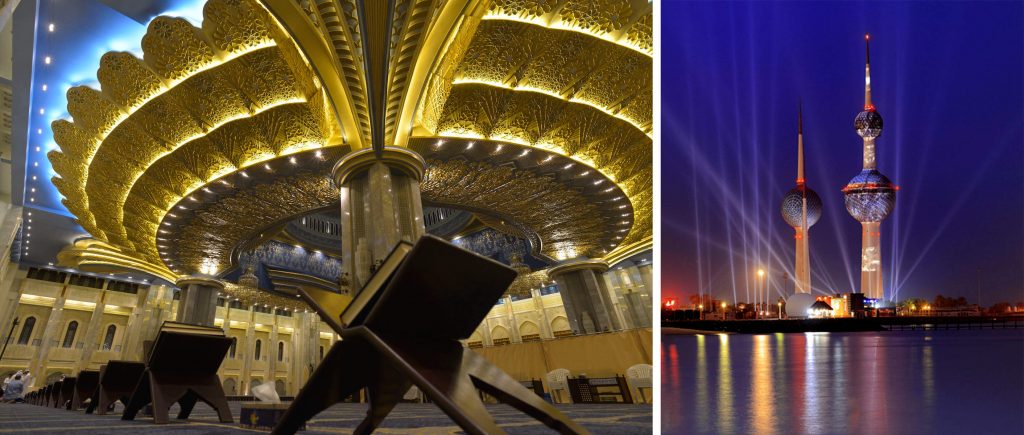
The Grand Mosque (left) and The Kuwait Towers (right)
Kuwaiti lifestyle
The lifestyle of the Kuwaiti people is distinctive in many ways. Let’s take a closer look at three main aspects of the Kuwaiti way of life.
Diwaniya social gathering places
Gathering places called diwaniyas are essential locations in Kuwait. They have served as meeting spaces for people to discuss society, politics and economic matters since antiquity. They have also come to serve as a crucial place for making important decisions.
But don’t get the wrong idea – they’re actually not very formal. Friends and neighbors welcome guests and discuss current issues as they snack on Arabic sweets and sip coffee or tea. Diwaniyas are known for encouraging the free exchange of ideas, like a coffee hour or a chat over tea.
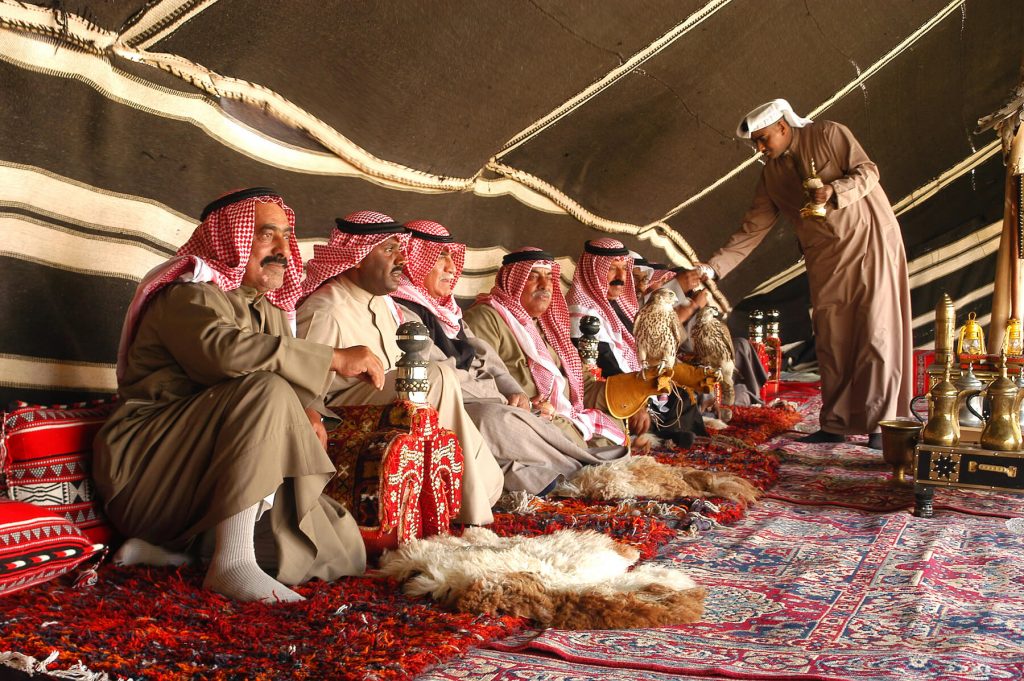
Some affluent households also include a special location called al diwaniya where guests may stay the night. Traditionally, diwaniyas were primarily used by men, but in recent years, more women are gathering in these locations too.
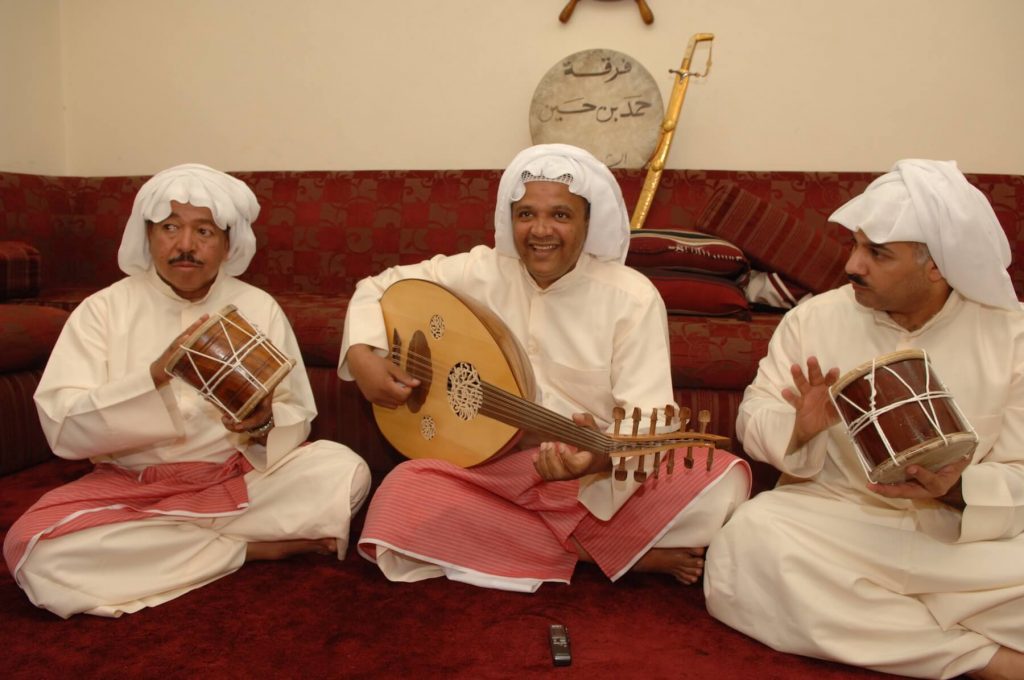
Traditional Kuwaiti dress
The traditional Kuwaiti male dress is called a dishdasha, an all-purpose garment worn for both formal and casual occasions. In contrast to the other countries on the Gulf Coast, Kuwait’s traditional dress is known for having buttons down the front to the waist. The dishdasha also has large pockets on both sides for carrying anything from a cell phone, wallet or prayer beads. For ceremonial or special occasions, men may wear a black coat called a bisht over a white dishdasha.
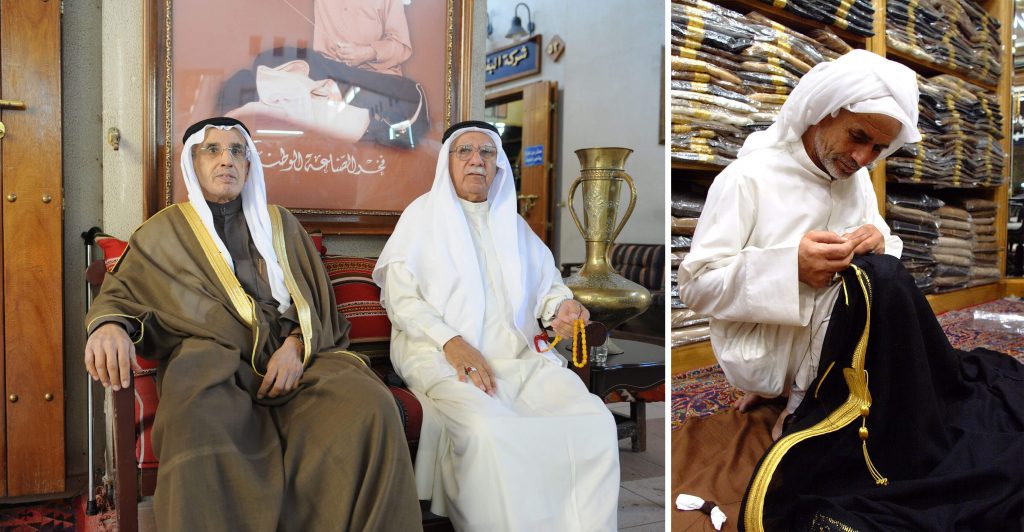
The abaya, the traditional women’s outfit of Kuwait, is a long black dress that hangs from the shoulders all the way to the floor. Abaya feature a wide variety of embroidery and trim. The traditional hijab cloth head covering is often colorful and coordinated to match women’s outfits.
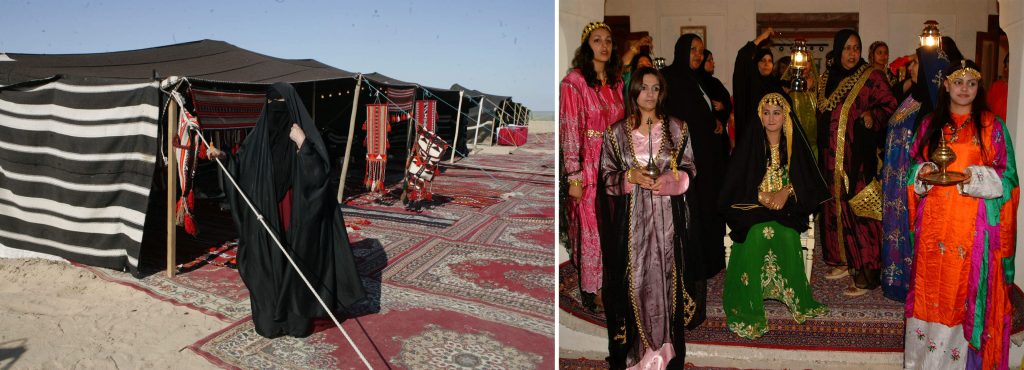
Machboos traditional home-cooked Kuwaiti cuisine
| Machboos is a seasoned rice dish served in almost every restaurant in Kuwait. Spices are added to sauteed onions and garlic and then cooked with rice and the main ingredient, which is generally fish or meat.
There are three primary types: machboos diyay, which features chicken, machboos laham, which features mutton, and machboos samak, which features fish. This is a staple dish served in homes throughout Kuwait on a daily basis. |
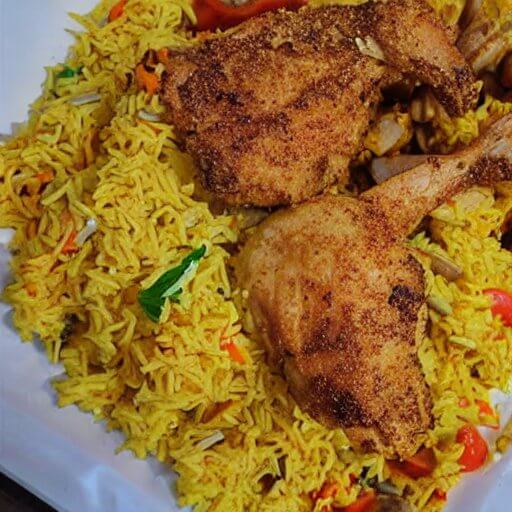 |
The music culture of Kuwait
Folk songs, music and dance have been considered a precious part of Kuwaiti life since antiquity. Especially during the era where maritime trade was at its peak, the men who went out to sea diving for pearls came in contact with many different cultures and spread many genres of music.
For instance, the fijiri, which was performed by pearl divers in the Gulf Coast, is a work song meant to encourage divers and sailors as they carried out their difficult jobs. Even today, when people have stopped diving for pearls, fijiri is still carefully passed down through the generations. Other popular music and dance genres include sawt, developed at the start of the 20th century and described as “the blues of Arabia,” and khaliji, a beautiful and elegant take on the traditional dances of the Arabian Gulf region.
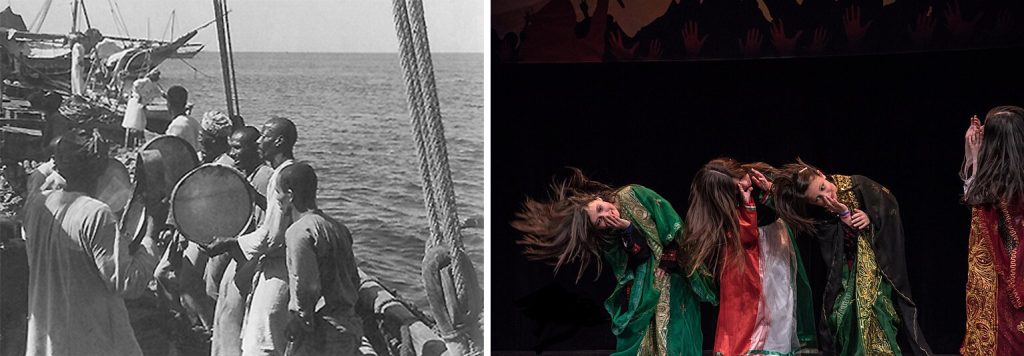
The fijiri (left) and The khaliji (right)
| The critical elements of traditional Kuwaiti music are drums and clapping, and the darbuka drum is shaped like a goblet that is held in one arm and struck with the free hand to produce sound.
Darbuka design varies by country and region. Since it can be easily transported, this drum ended up playing an important role in many genres of Kuwaiti music. Nowadays, many modern artists have emerged who blend this kind of traditional music with a modern, exciting vibe. |
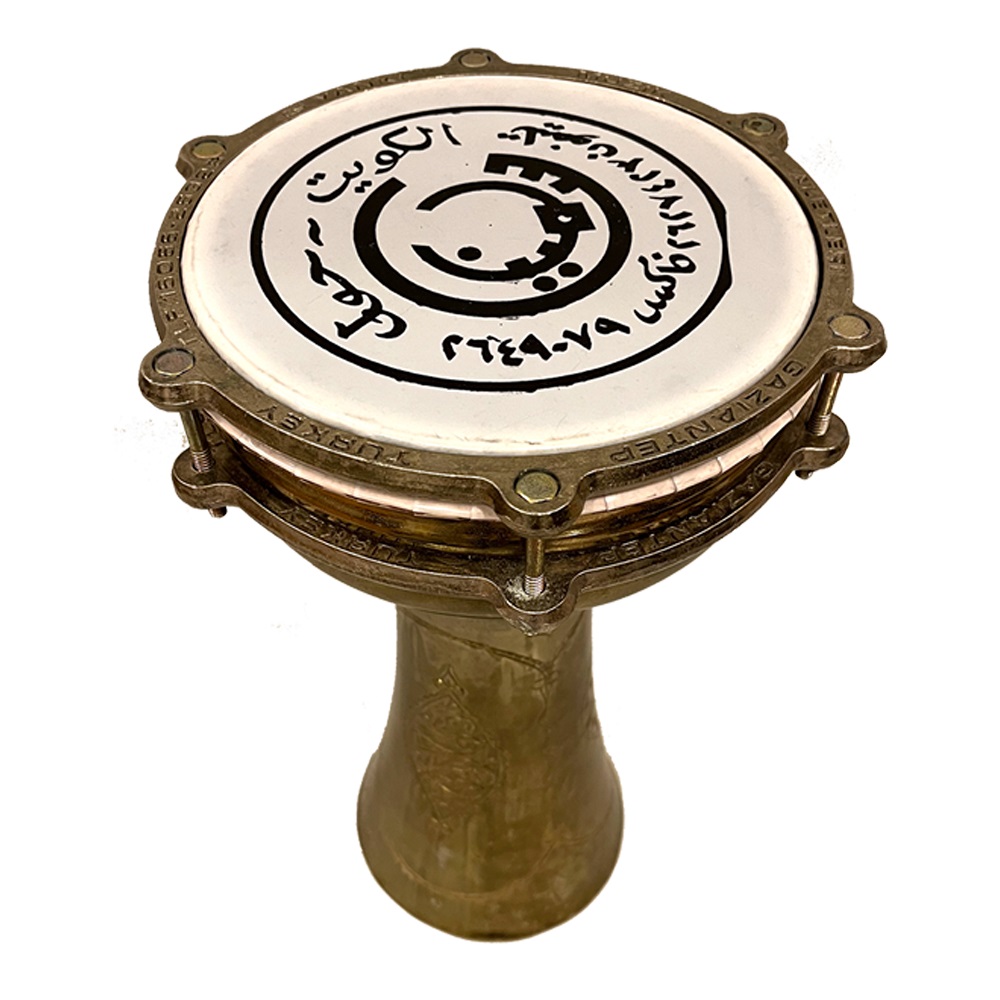 |
Musicians recommended by the Embassy of the State of Kuwait in Japan
In closing, we would like to introduce musicians recommended by the Embassy of the State of Kuwait in Japan.
- Yalwatan yalzabrqan – Ahlam and Bashar Al-shatti
- Habeebiti Ya Kuwait – NBK
- Kulama Zadat Almahan – Shadi alkhalij and Sana Al-kharaz
What did you think of your music journey to Kuwait? There are still many more places to go! Please look forward to our next destination.
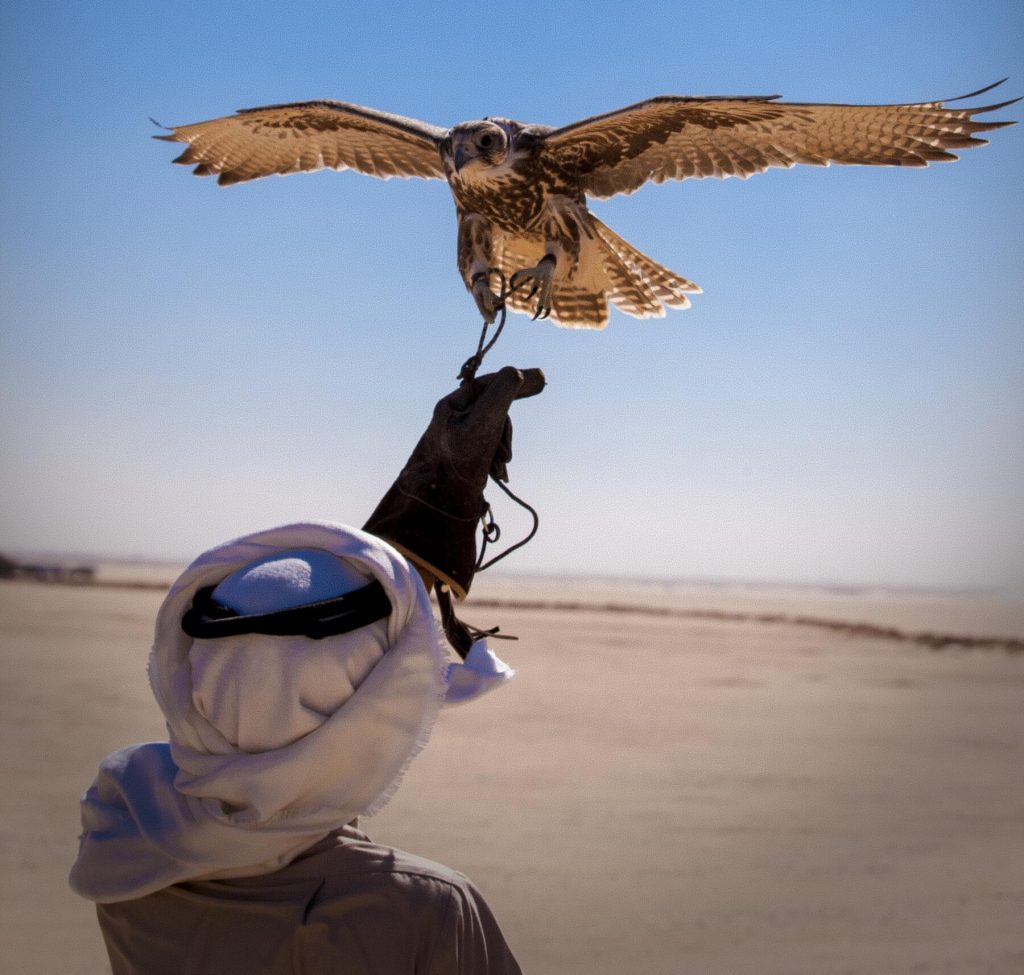
(Produced in collaboration with the Embassy of the State of Kuwait in Japan, who also provided photos.)
Min-On Concert Association
-Music Binds Our Hearts-


